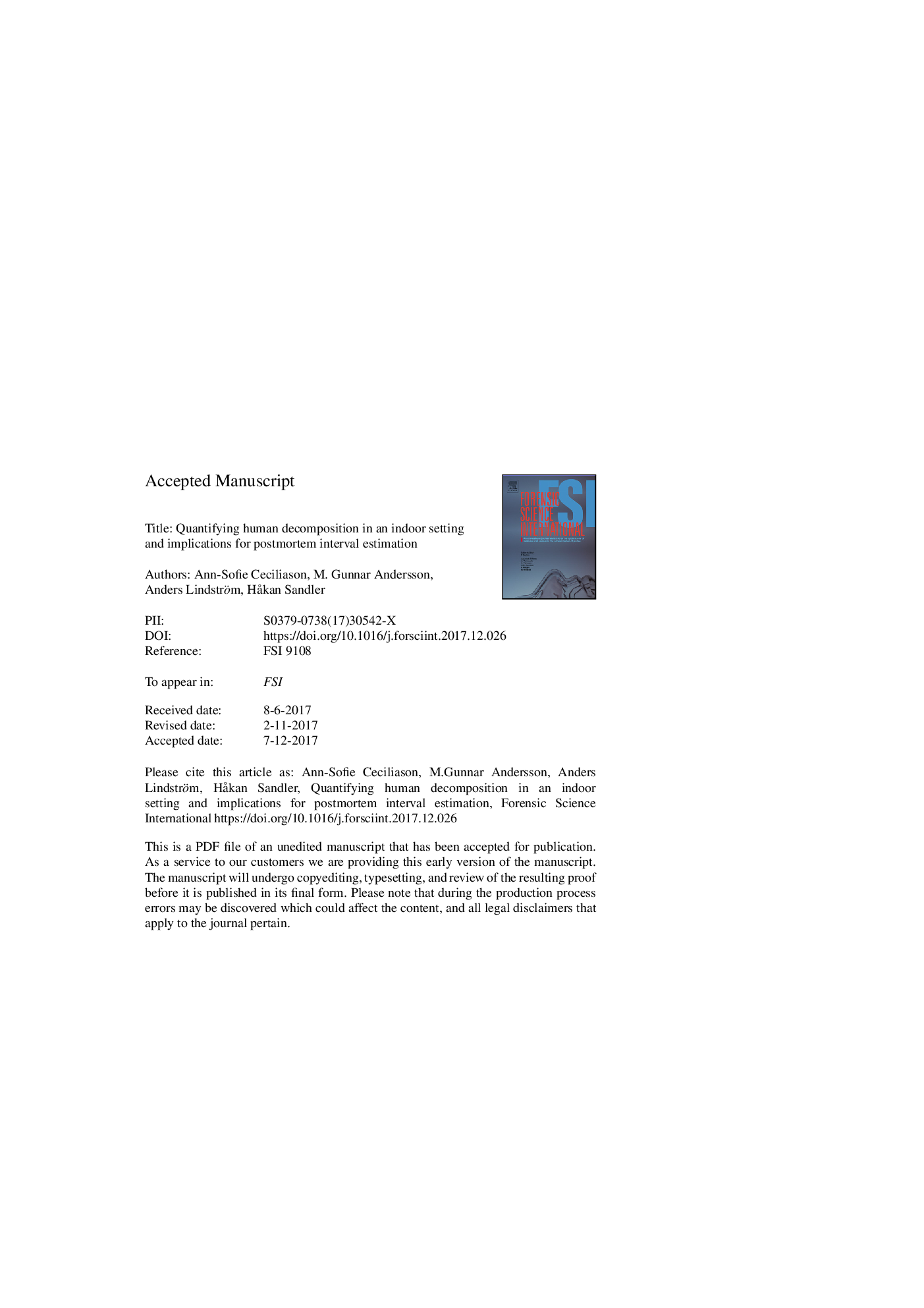| Article ID | Journal | Published Year | Pages | File Type |
|---|---|---|---|---|
| 6551320 | Forensic Science International | 2018 | 22 Pages |
Abstract
In our model setting, it is estimated that, in cases with or without the presence of blowfly larvae, approximately 45% or 66% respectively, of the variance in TBS can be derived from Accumulated Degree-Days (ADD). The precision in estimating ADD/PMI from TBS is, in our setting, moderate to low. However, dividing the cases into defined subgroups suggests the possibility to increase the precision of the model. Our findings also suggest a significant seasonal difference with concomitant influence on TBS in the complete data set, possibly initiated by the presence of insect activity mainly during summer. PMI may be underestimated in cases with presence of desiccation. Likewise, there is a need for evaluating the effect of insect activity, to avoid overestimating the PMI. Our data sample indicates that the scoring method might need to be slightly modified to better reflect indoor decomposition, especially in cases with insect infestations or/and extensive desiccation. When applying TBS in an indoor setting, the model requires distinct inclusion criteria and a defined population.
Related Topics
Physical Sciences and Engineering
Chemistry
Analytical Chemistry
Authors
Ann-Sofie Ceciliason, M. Gunnar Andersson, Anders Lindström, HÃ¥kan Sandler,
